-
 Bitcoin
Bitcoin $108,228.4534
-0.75% -
 Ethereum
Ethereum $2,524.8743
-1.10% -
 Tether USDt
Tether USDt $1.0003
-0.01% -
 XRP
XRP $2.2250
-0.63% -
 BNB
BNB $656.0016
-0.57% -
 Solana
Solana $148.4911
-1.36% -
 USDC
USDC $1.0000
0.00% -
 TRON
TRON $0.2846
-0.95% -
 Dogecoin
Dogecoin $0.1646
-1.38% -
 Cardano
Cardano $0.5767
-1.03% -
 Hyperliquid
Hyperliquid $39.3026
0.80% -
 Sui
Sui $2.9291
0.05% -
 Bitcoin Cash
Bitcoin Cash $483.6554
0.19% -
 Chainlink
Chainlink $13.2526
-1.01% -
 UNUS SED LEO
UNUS SED LEO $9.0390
-0.17% -
 Avalanche
Avalanche $17.9293
-1.10% -
 Stellar
Stellar $0.2376
-1.15% -
 Toncoin
Toncoin $2.7533
-1.89% -
 Shiba Inu
Shiba Inu $0.0...01149
-0.80% -
 Hedera
Hedera $0.1563
0.26% -
 Litecoin
Litecoin $86.7275
-1.92% -
 Monero
Monero $311.5944
-2.47% -
 Polkadot
Polkadot $3.3741
-1.97% -
 Dai
Dai $1.0000
0.01% -
 Ethena USDe
Ethena USDe $1.0002
0.00% -
 Bitget Token
Bitget Token $4.4043
-1.32% -
 Uniswap
Uniswap $7.0131
-4.90% -
 Aave
Aave $274.3481
1.75% -
 Pepe
Pepe $0.0...09808
0.11% -
 Pi
Pi $0.4677
-3.26%
How to perform grid trading at Gate.io? Automated arbitrage strategy settings
Set up grid trading on Gate.io by defining upper/lower limits, grid number, and investment amount; enhance with automated arbitrage for better trading performance.
May 09, 2025 at 10:22 am
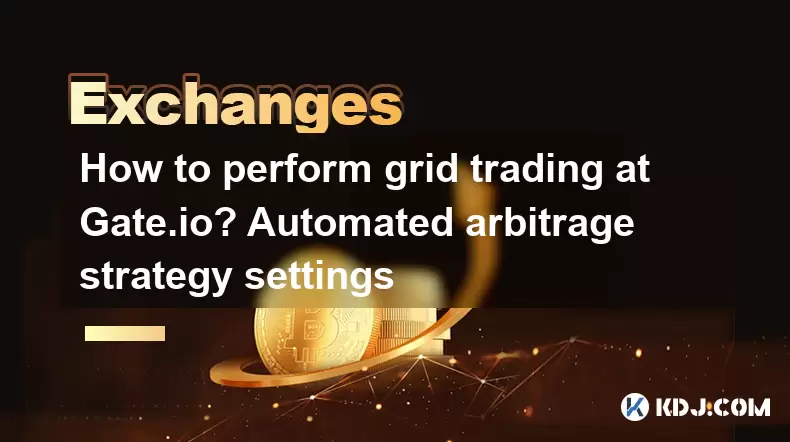
Grid trading at Gate.io is a popular strategy among cryptocurrency traders looking to capitalize on market volatility. This method involves setting up a series of buy and sell orders at predetermined price levels, forming a "grid" that automatically trades as the market fluctuates. In this article, we will explore how to set up grid trading on Gate.io and discuss the automated arbitrage strategy settings that can enhance your trading experience.
Understanding Grid Trading
Grid trading is a strategy that allows traders to profit from market movements within a specific range. By setting up a grid of buy and sell orders, traders can automatically execute trades as the price moves up and down. This approach is particularly useful in sideways markets, where the price oscillates within a defined range.
To set up grid trading on Gate.io, you will need to understand the key components of this strategy:
- Upper Limit: The highest price level at which you want to sell your assets.
- Lower Limit: The lowest price level at which you want to buy assets.
- Grid Number: The number of price levels between the upper and lower limits.
- Investment Amount: The total amount of cryptocurrency you are willing to invest in the grid.
Setting Up Grid Trading on Gate.io
To start grid trading on Gate.io, follow these detailed steps:
Log into Your Gate.io Account: Ensure you are logged into your Gate.io account. If you don't have an account, you will need to sign up and complete the necessary verification processes.
Navigate to the Grid Trading Section: Once logged in, go to the "Trading" section of the platform and select "Grid Trading" from the menu.
Select the Trading Pair: Choose the cryptocurrency pair you want to trade. For example, if you want to trade Bitcoin against USDT, select the BTC/USDT pair.
Configure Your Grid Parameters:
- Upper Limit: Enter the highest price at which you want to sell your assets. For example, if you are trading BTC/USDT and the current price is $30,000, you might set the upper limit at $32,000.
- Lower Limit: Enter the lowest price at which you want to buy assets. Using the same example, you might set the lower limit at $28,000.
- Grid Number: Decide how many price levels you want between the upper and lower limits. A higher number of grids can result in more frequent trades but may also increase transaction fees.
- Investment Amount: Specify the total amount of cryptocurrency you want to invest in the grid. This amount will be used to buy assets at the lower limit and sell at the upper limit.
Review and Confirm: After setting your parameters, review them carefully. Once you are satisfied, click "Create Grid" to start your grid trading strategy.
Automated Arbitrage Strategy Settings
Automated arbitrage is another strategy that can be combined with grid trading to enhance your trading performance. Arbitrage involves taking advantage of price differences between different markets or exchanges. On Gate.io, you can set up automated arbitrage strategies to execute trades automatically when certain conditions are met.
To set up automated arbitrage on Gate.io, follow these steps:
Access the Arbitrage Section: Navigate to the "Trading" section and select "Arbitrage" from the menu.
Choose the Arbitrage Pair: Select the cryptocurrency pair you want to use for arbitrage. For example, you might choose BTC/USDT.
Set Up Arbitrage Parameters:
- Price Difference Threshold: Set the minimum price difference between two markets that will trigger an arbitrage trade. For example, if you set a threshold of 1%, the system will only execute trades when the price difference between two markets is at least 1%.
- Trade Amount: Specify the amount of cryptocurrency you want to trade in each arbitrage transaction.
- Execution Speed: Choose how quickly you want the arbitrage trades to be executed. Faster execution can increase the chances of capturing price differences but may also increase transaction costs.
Review and Confirm: After setting your parameters, review them carefully. Once you are satisfied, click "Start Arbitrage" to begin your automated arbitrage strategy.
Combining Grid Trading and Arbitrage
Combining grid trading with automated arbitrage can create a powerful trading strategy that maximizes your potential profits. Here's how you can integrate these two strategies on Gate.io:
Set Up Grid Trading: Follow the steps outlined earlier to set up your grid trading strategy for a specific cryptocurrency pair.
Set Up Arbitrage: Simultaneously, set up an automated arbitrage strategy for the same cryptocurrency pair. Ensure that the price difference threshold is set to a level that aligns with your grid trading parameters.
Monitor and Adjust: Regularly monitor the performance of both strategies and make adjustments as needed. For example, if the market becomes more volatile, you might need to adjust your grid parameters or arbitrage thresholds to capture more opportunities.
Managing Risks in Grid Trading and Arbitrage
While grid trading and automated arbitrage can be profitable, they also come with risks. Here are some tips for managing these risks on Gate.io:
Set Stop-Loss Orders: Use stop-loss orders to limit potential losses. For example, if you are using grid trading, you can set a stop-loss order to sell your assets if the price falls below a certain level.
Monitor Market Conditions: Keep an eye on market conditions and be prepared to adjust your strategies if the market becomes too volatile or if there are significant changes in price trends.
Diversify Your Investments: Don't put all your funds into a single grid trading or arbitrage strategy. Diversify your investments across different cryptocurrency pairs and strategies to spread your risk.
Understand Transaction Fees: Be aware of the transaction fees associated with grid trading and arbitrage. High transaction fees can eat into your profits, so consider these costs when setting up your strategies.
Frequently Asked Questions
Q: Can I use grid trading and arbitrage on multiple cryptocurrency pairs simultaneously on Gate.io?
A: Yes, Gate.io allows you to set up grid trading and arbitrage strategies for multiple cryptocurrency pairs at the same time. However, you should monitor each strategy carefully to ensure they are performing as expected.
Q: How often should I adjust my grid trading and arbitrage parameters?
A: The frequency of adjustments depends on market conditions. In highly volatile markets, you may need to adjust your parameters more frequently to capture opportunities and manage risks. In more stable markets, less frequent adjustments may be sufficient.
Q: What are the main differences between grid trading and arbitrage on Gate.io?
A: Grid trading involves setting up a series of buy and sell orders within a specific price range to profit from market fluctuations. Arbitrage, on the other hand, involves taking advantage of price differences between different markets or exchanges. Both strategies can be automated on Gate.io, but they serve different purposes and require different settings.
Q: Are there any specific cryptocurrencies that are better suited for grid trading and arbitrage on Gate.io?
A: The suitability of a cryptocurrency for grid trading and arbitrage depends on its liquidity and volatility. Highly liquid and volatile cryptocurrencies like Bitcoin and Ethereum are often good candidates for these strategies. However, you should always conduct your own research and consider the specific market conditions before setting up your strategies.
Disclaimer:info@kdj.com
The information provided is not trading advice. kdj.com does not assume any responsibility for any investments made based on the information provided in this article. Cryptocurrencies are highly volatile and it is highly recommended that you invest with caution after thorough research!
If you believe that the content used on this website infringes your copyright, please contact us immediately (info@kdj.com) and we will delete it promptly.
- Cryptos in July 2025: Massive Gains or Just Hype?
- 2025-07-05 20:30:13
- Hong Kong's Tokenised Bond Leap: Zero Stamp Duty Sparks Web3 Ambitions
- 2025-07-05 20:30:13
- Bitcoin, Ripple, and TPS: A New Sheriff in Town?
- 2025-07-05 19:16:07
- XRP, Dogecoin, and Meme Coins: Navigating the Crypto Landscape
- 2025-07-05 20:10:13
- Bitcoin Investment: Will You 10x by 2030?
- 2025-07-05 19:16:07
- BONK on Solana: Meme Coin Mania or the Real Deal?
- 2025-07-05 19:16:08
Related knowledge
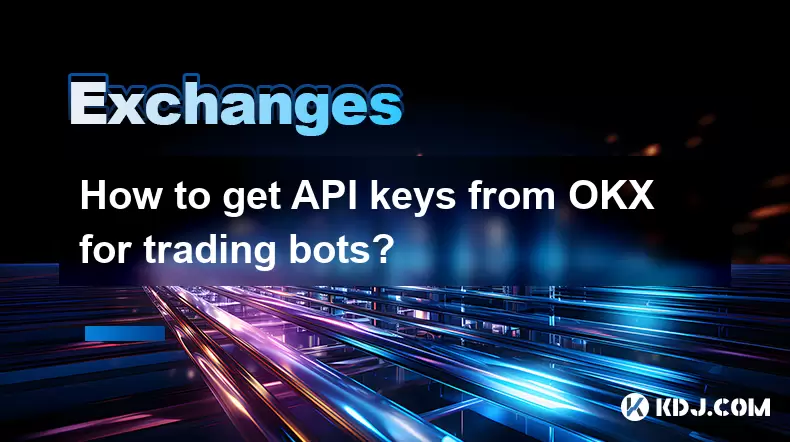
How to get API keys from OKX for trading bots?
Jul 03,2025 at 07:07am
Understanding API Keys on OKXTo interact with the OKX exchange programmatically, especially for building or running trading bots, you need to obtain an API key. An API (Application Programming Interface) key acts as a secure token that allows your bot to communicate with the exchange's servers. On OKX, these keys come with customizable permissions such ...
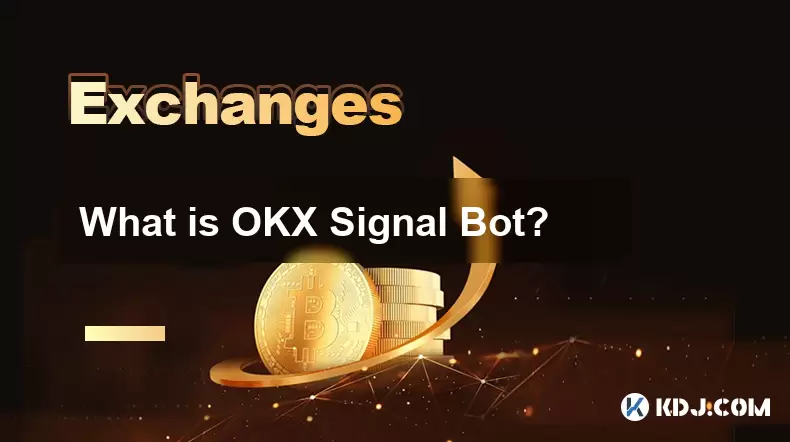
What is OKX Signal Bot?
Jul 02,2025 at 11:01pm
Understanding the Basics of OKX Signal BotThe OKX Signal Bot is a feature within the OKX ecosystem that provides users with automated trading signals and execution capabilities. Designed for both novice and experienced traders, this bot helps identify potential trading opportunities by analyzing market trends, technical indicators, and historical data. ...
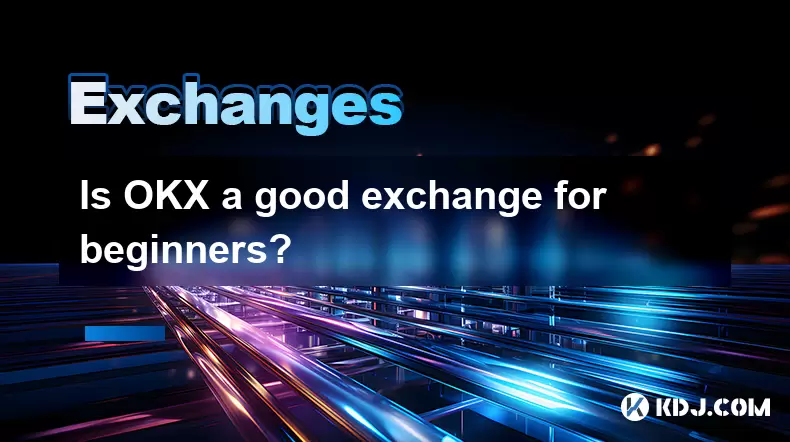
Is OKX a good exchange for beginners?
Jul 03,2025 at 05:00pm
What Is OKX and Why Is It Popular?OKX is one of the leading cryptocurrency exchanges globally, known for its robust trading infrastructure and a wide variety of digital assets available for trading. It supports over 300 cryptocurrencies, including major ones like Bitcoin (BTC), Ethereum (ETH), and Solana (SOL). The platform has gained popularity not onl...
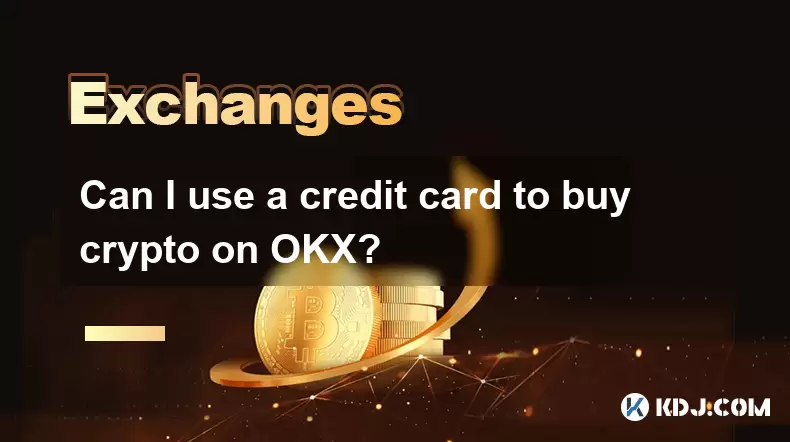
Can I use a credit card to buy crypto on OKX?
Jul 04,2025 at 04:28am
Understanding OKX and Credit Card PaymentsOKX is one of the leading cryptocurrency exchanges globally, offering a wide range of services including spot trading, derivatives, staking, and more. Users often wonder whether they can use a credit card to buy crypto on OKX, especially if they are new to the platform or looking for quick ways to enter the mark...
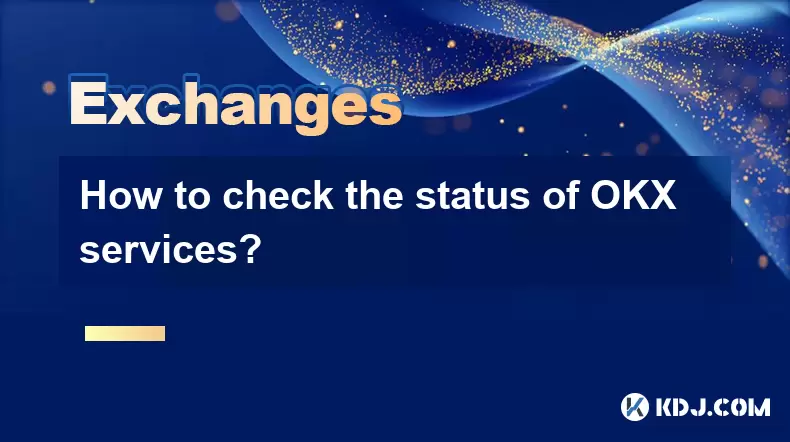
How to check the status of OKX services?
Jul 02,2025 at 11:14pm
What is OKX, and Why Checking Service Status Matters?OKX is one of the world’s leading cryptocurrency exchanges, offering services such as spot trading, futures trading, staking, and more. With millions of users relying on its platform for daily transactions, it's crucial to know how to check the status of OKX services. Downtime or maintenance can affec...
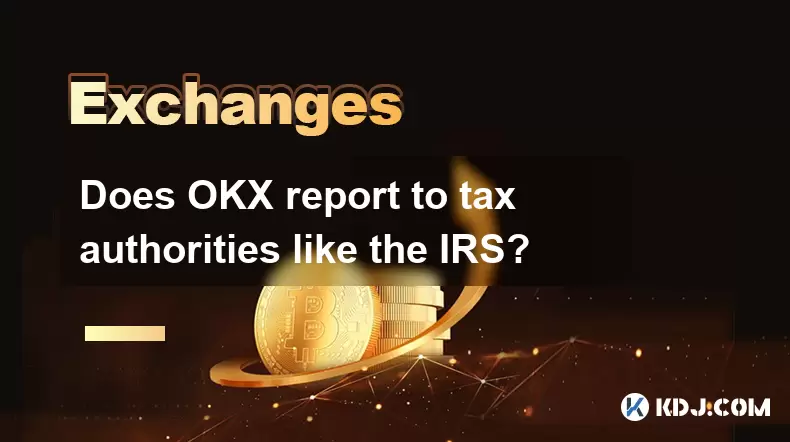
Does OKX report to tax authorities like the IRS?
Jul 03,2025 at 03:14pm
Understanding the Role of Cryptocurrency Exchanges in Tax ReportingCryptocurrency exchanges play a crucial role in facilitating digital asset transactions, but their responsibilities extend beyond trading and custody. As regulatory scrutiny intensifies globally, users are increasingly concerned about whether platforms like OKX report to tax authorities ...

How to get API keys from OKX for trading bots?
Jul 03,2025 at 07:07am
Understanding API Keys on OKXTo interact with the OKX exchange programmatically, especially for building or running trading bots, you need to obtain an API key. An API (Application Programming Interface) key acts as a secure token that allows your bot to communicate with the exchange's servers. On OKX, these keys come with customizable permissions such ...

What is OKX Signal Bot?
Jul 02,2025 at 11:01pm
Understanding the Basics of OKX Signal BotThe OKX Signal Bot is a feature within the OKX ecosystem that provides users with automated trading signals and execution capabilities. Designed for both novice and experienced traders, this bot helps identify potential trading opportunities by analyzing market trends, technical indicators, and historical data. ...

Is OKX a good exchange for beginners?
Jul 03,2025 at 05:00pm
What Is OKX and Why Is It Popular?OKX is one of the leading cryptocurrency exchanges globally, known for its robust trading infrastructure and a wide variety of digital assets available for trading. It supports over 300 cryptocurrencies, including major ones like Bitcoin (BTC), Ethereum (ETH), and Solana (SOL). The platform has gained popularity not onl...

Can I use a credit card to buy crypto on OKX?
Jul 04,2025 at 04:28am
Understanding OKX and Credit Card PaymentsOKX is one of the leading cryptocurrency exchanges globally, offering a wide range of services including spot trading, derivatives, staking, and more. Users often wonder whether they can use a credit card to buy crypto on OKX, especially if they are new to the platform or looking for quick ways to enter the mark...

How to check the status of OKX services?
Jul 02,2025 at 11:14pm
What is OKX, and Why Checking Service Status Matters?OKX is one of the world’s leading cryptocurrency exchanges, offering services such as spot trading, futures trading, staking, and more. With millions of users relying on its platform for daily transactions, it's crucial to know how to check the status of OKX services. Downtime or maintenance can affec...

Does OKX report to tax authorities like the IRS?
Jul 03,2025 at 03:14pm
Understanding the Role of Cryptocurrency Exchanges in Tax ReportingCryptocurrency exchanges play a crucial role in facilitating digital asset transactions, but their responsibilities extend beyond trading and custody. As regulatory scrutiny intensifies globally, users are increasingly concerned about whether platforms like OKX report to tax authorities ...
See all articles

























































































